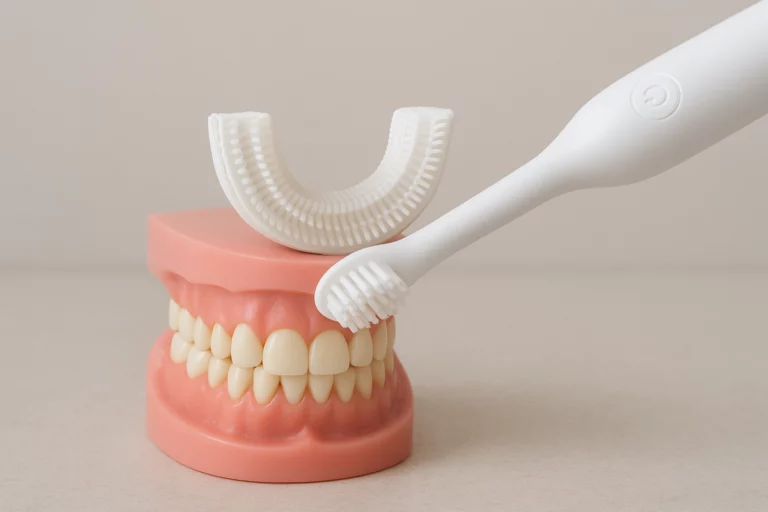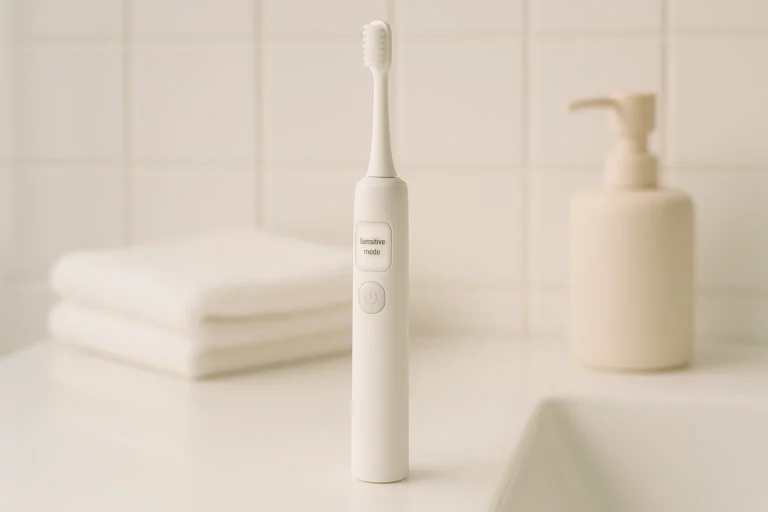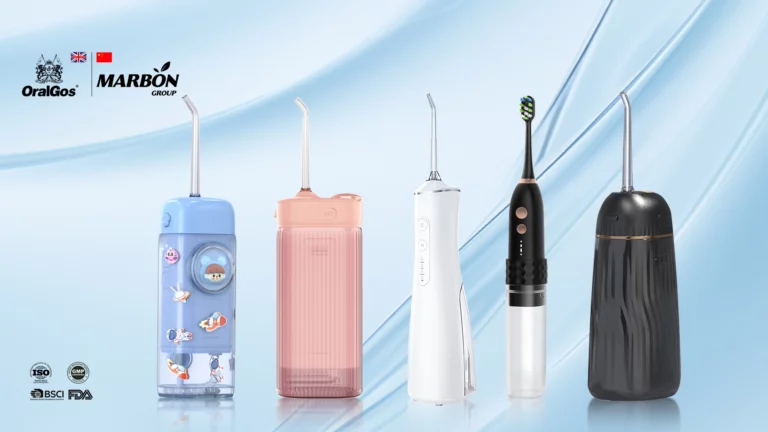Are you launching a sonic electric toothbrush OEM project or expanding your oral-care products? The key question is: should you choose sonic or oscillating technology? Both have proven performance records, but they deliver cleaning power in very different ways. Knowing these differences lets you choose the technology that best fits your market — leading to wiser business decisions.

1. How the Technologies Work
Sonic Electric Toothbrushes
Sonic models operate with high-frequency vibrations — often exceeding 30,000 strokes per minute. The fast vibrations help toothpaste and water reach the small gaps between teeth and along the gums gently and effectively. The brushing sensation is smooth, making it ideal for users seeking a modern, gentle, and quiet brushing experience.
Oscillating Electric Toothbrushes
Oscillating heads rotate back and forth, usually at a much lower frequency but with more mechanical scrubbing force. Many oscillating models also include pulsations to enhance plaque removal. They mimic a polishing action, which some users feel gives a “deeper clean” sensation.

2. User Experience Differences
Comfort and Sensation
- Sonic: Feels gentle and less abrasive, making it suitable for people with sensitive gums or enamel concerns.
- Oscillating: Offers a more robust brushing feel, which can appeal to users who equate stronger motion with better cleaning.
Noise Level
- Sonic: Quieter operation, often compared to a faint hum.
- Oscillating: Louder, due to the mechanical rotation of the brush head.
Learning Curve
- Sonic: Easier for first-time electric toothbrush users; the brushing technique is similar to manual brushing.
- Oscillating: Requires more precise positioning to maximize cleaning effectiveness on each tooth surface.
3. Market Demographics and Preferences
Choosing between sonic and oscillating technology is not just about engineering — it’s about understanding your buyers.
- Younger consumers, wellness-focused buyers, and markets that prioritize innovation often prefer sonic toothbrushes. They are also popular in regions that emphasize preventive dental care and gentle gum health.
- In Europe and North America, many choose oscillating toothbrushes for their strong cleaning and fresh, dentist-like feeling.
4. Cost Considerations for OEM Projects
When planning a sonic electric toothbrush OEM production or developing an oscillating model, cost factors play a crucial role.
- Manufacturing Costs: Sonic models generally require more advanced motor technology and battery efficiency, which can raise initial production costs.
- Replacement Heads: Oscillating brush heads may be less expensive to produce but need more frequent replacement in some designs.
- Market Price Positioning: Sonic toothbrushes usually target the mid-to-premium price range. Oscillating toothbrushes are available at every price point, from cheap to premium.
5. Strategic Product Positioning
For oral-care brands and distributors, this is how you can fit each technology into your product range:
- Use sonic technology for premium wellness buyers, subscription services, or customers who prefer a quiet, gentle brushing experience.
- Go with oscillating technology for value-focused markets, strong cleaning performance, or retail bundles with other personal-care items.

6. The OEM Advantage
Choosing the right OEM partner can make a significant difference in product quality, compliance, and time-to-market. Picking sonic or oscillating? The right OEM will help you tailor motor power, handle design, battery life, and branding for your customers.
Want to learn more about our toothbrush OEM services and full electric toothbrush lineup? Visit our product pages to see how we can help you launch the right technology.

Conclusion
The decision between sonic and oscillating electric toothbrush technology comes down to market fit, user expectations, and cost strategy. Sonic toothbrushes provide a gentle, high-tech clean that appeals to premium buyers. Oscillating brushes offer a stronger, scrubbing clean that feels like a fresh dental visit.
Pick the technology your customers want. Work with a trusted sonic or oscillating toothbrush OEM. Together, you’ll make products people love, grow your brand, and win in the market.





